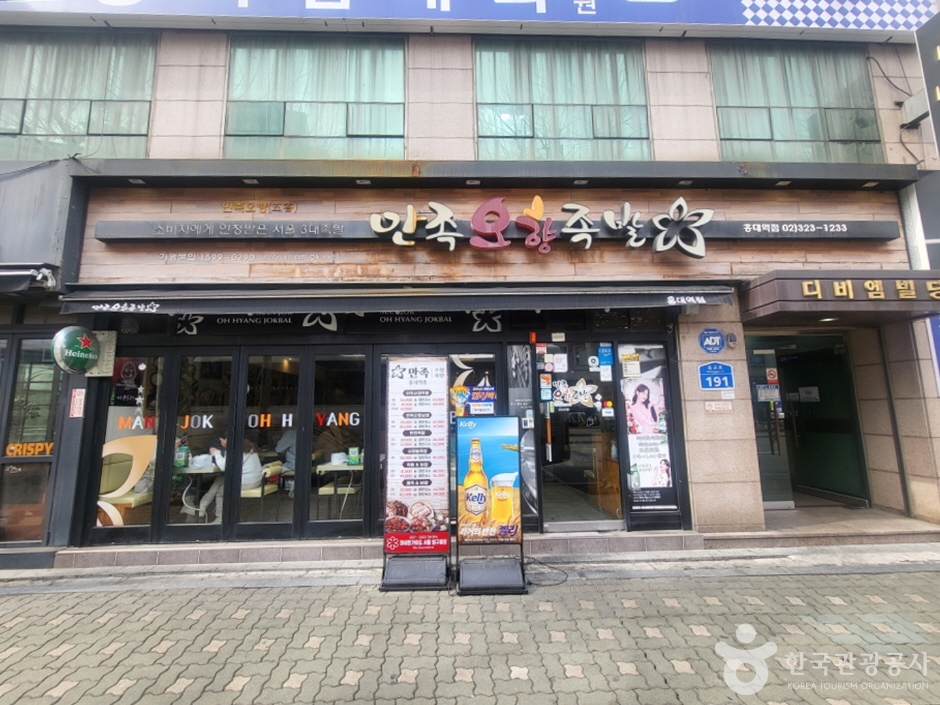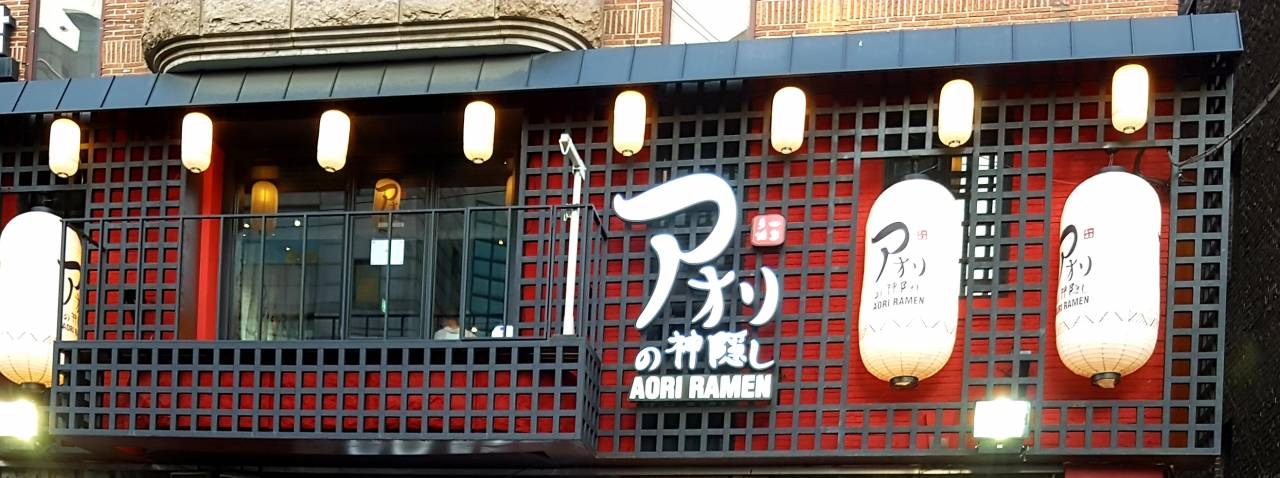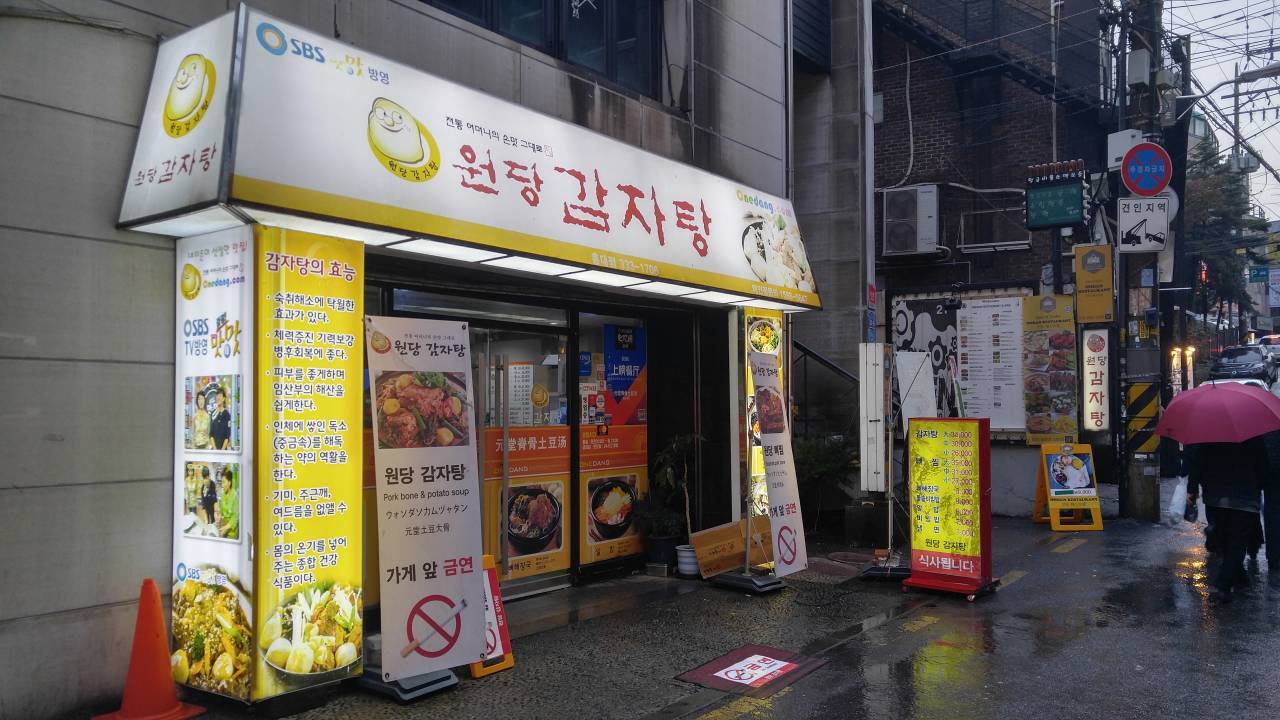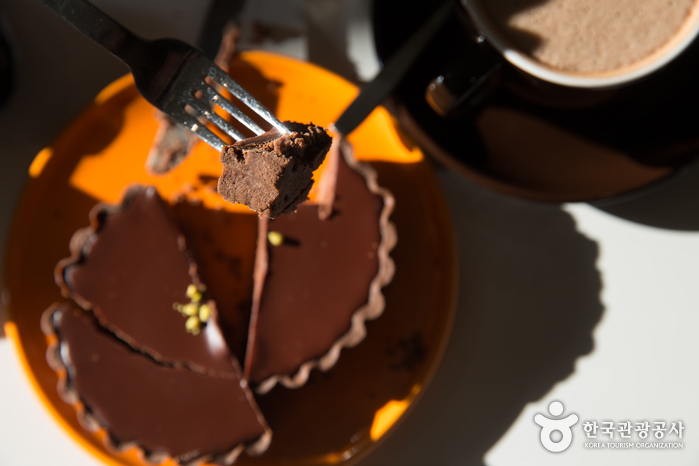Hongdae (Hongik University Street) (홍대)
2.1Km 2025-04-14
20 Hongik-ro, Mapo-gu, Seoul
Hongdae is a neighborhood known for its youthful ambience, with shops selling everything from clothing and cosmetics to living goods and books, as well as unique cafés and restaurants. The streets are also filled with buskers and dance performances, making a walk here quite entertaining. Special streets such as ateliers’ street (lined with private institutions for art students preparing for university entrance exams), Picasso’s Street, and Club Street are also must-go places for anyone hoping to fully experience the Hongdae area.
ABC-Mart - Hongdae Branch [Tax Refund Shop] (ABC마트 홍대점)
2.1Km 2024-04-23
17, Hongik-ro, Mapo-gu, Seoul
-
Manjok Ohyang Jokbal Hongik Univ.(만족오향족발 홍대)
2.1Km 2024-03-20
191 Donggyo-ro Mapo-gu Seoul
+82-2-323-1233
Located near Hongik Univ. Station, Manjok Ohyang Jokbal is said to be one of the top three jokbal (braised pigs' feet) restaurants in Seoul. Their signature dishes are manjog ohyang jokbal (braised five-spice pigs' feet), jokbal and jaengban guksu (jumbo sized buckwheat noodles) set menu. Manjok ohyang jokbal is made with pigs' feet marinated in five different sauce flavors, giving it a chewy texture and rich flavor. Bul jokbal (spicy braised pigs' feet) is a popular dish that can be paired with bossam (kimchi cabbage wraps with pork) or jokbal as a half and half set menu.
Artbox - Seogyo Branch [Tax Refund Shop] (아트박스 서교)
2.1Km 2024-04-18
#101, and #103, 19, Hongik-ro, Mapo-gu, Seoul
-
AORI RAMEN - Hongdae Branch(아오리의행방불명 홍대)
2.1Km 2021-04-15
76, Wausan-ro, Mapo-gu, Seoul
+82-2-332-3767
This is a cafe located in Namdong-gu, Incheon. The representative menu is coffee. Enjoy coffee and sandwiches together.
Wondang Gamjatang Hongdae (원당감자탕 홍대)
2.1Km 2024-03-19
Hana building, 20-6, Wausan-ro, 21-gil, Mapo-gu, Seoul
+82-2-333-1706
Located near Hongik University, Wondang Gamjatang specializes in gamjatang (pork backbone stew). Gamjatang is a thick and spicy soup made with pork backbone, potatoes, kimchi cabbage, ground perilla seeds, green onions, garlic, and other vegetables and seasonings. Customers have the option to rolled omelet, hot stone pot rice, and beef and rice soup. 7-minute walk from Exit 9 of Hongik Univ. Station, it is easily accessible.
17℃ (17도씨)
2.1Km 2019-01-26
38, Donggyo-ro 29-gil, Mapo-gu, Seoul
17℃ stands for the optimum temperature to preserve chocolates at its best quality. Presenting a wide variety of hand-made chocolates, purchasable items include chocolate bars and café menus like chocolate cakes and chocolate beverages. In particular, you can control the amount of cacao in your chocolate drink ranging from 40%~80% according to your preference.
Olive Young - Dohwa-dong Mapo Branch [Tax Refund Shop] (올리브영 마포도화)
2.1Km 2024-04-18
20, Samgae-ro, Mapo-gu, Seoul
-
Seoul Hyochang Park (서울 효창공원)
2.1Km 2024-07-09
177-18 Hyochangwon-ro, Yongsan-gu, Seoul
+82-2-2199-7608
Hyochang Park covers 122,245 square meters spanning across Hyochang-dong and Cheongpa 2-dong. It is a historic landmark that once contained several royal tombs, and was known at that time as Hyochangwon. The cemeteries that were originally located in Hyochangwon belonged to Crown Prince Munhyo, King Jeongjo’s first son who died at the age of five; Royal Noble Consort Uibin of the Seong Clan, King Jeongjo’s royal concubine and Crown Prince Munhyo’s mother; Royal Noble Consort Sugui of the Park Clan, King Sunjo’s royal concubine; and her daughter Princess Yeongon. The royal tombs were moved to Seooreung Tombs in the waning months of the Japanese colonial period. The Japanese empire began the development of Hyochangwon into a park in 1924, and the Japanese governor-general officially assigned the site as a park in 1940.
Presently, several of Korea’s greatest leaders are buried in Hyochang Park. The remains mostly belong to independence activists including Yoon Bong-gil, Lee Bong-chang, and Baek Jeong-gi, whose graves are collectively known as Samuisa Tomb. A statue of Lee Bong-chang has been built in the graveyard. Among the other patriotic martyrs who are interred in the park are Kim Gu and some of the key figures of the provisional government such as Lee Dong-nyeong, Cha I-seok, and Cho Seong-hwan. An ancestral shrine named Uiyeolsa has been built along the main gate and holds the portraits of the deceased independence activists.

![ABC-Mart - Hongdae Branch [Tax Refund Shop] (ABC마트 홍대점)](http://tong.visitkorea.or.kr/cms/resource/33/2890333_image2_1.jpg)

![Doctor Petit [Tax Refund Shop] (닥터쁘띠의원)](http://tong.visitkorea.or.kr/cms/resource/86/3314486_image2_1.jpg)
![Artbox - Seogyo Branch [Tax Refund Shop] (아트박스 서교)](http://tong.visitkorea.or.kr/cms/resource/62/2889062_image2_1.jpg)



![Olive Young - Dohwa-dong Mapo Branch [Tax Refund Shop] (올리브영 마포도화)](http://tong.visitkorea.or.kr/cms/resource/04/2888904_image2_1.jpg)
 English
English
 한국어
한국어 日本語
日本語 中文(简体)
中文(简体) Deutsch
Deutsch Français
Français Español
Español Русский
Русский